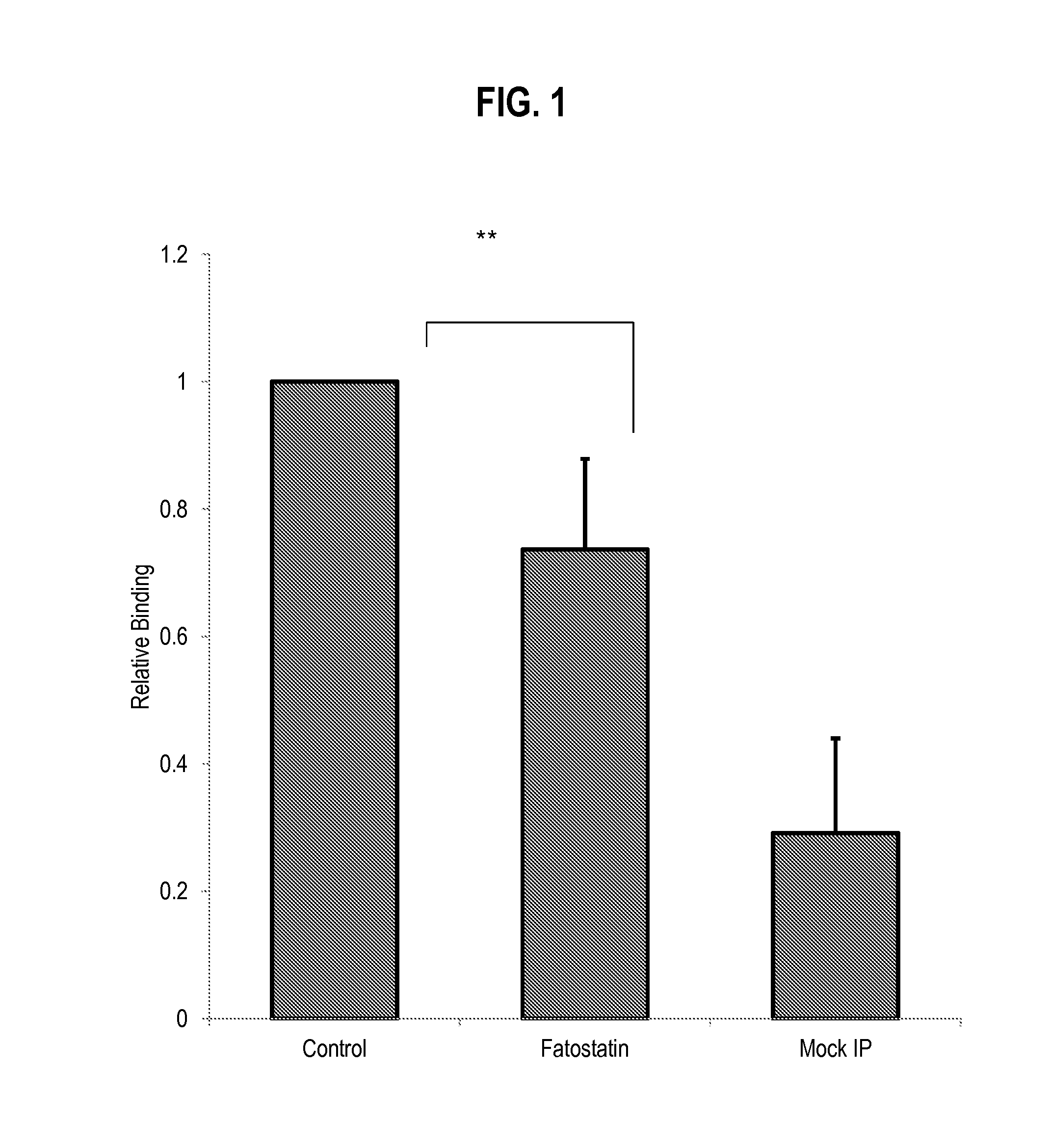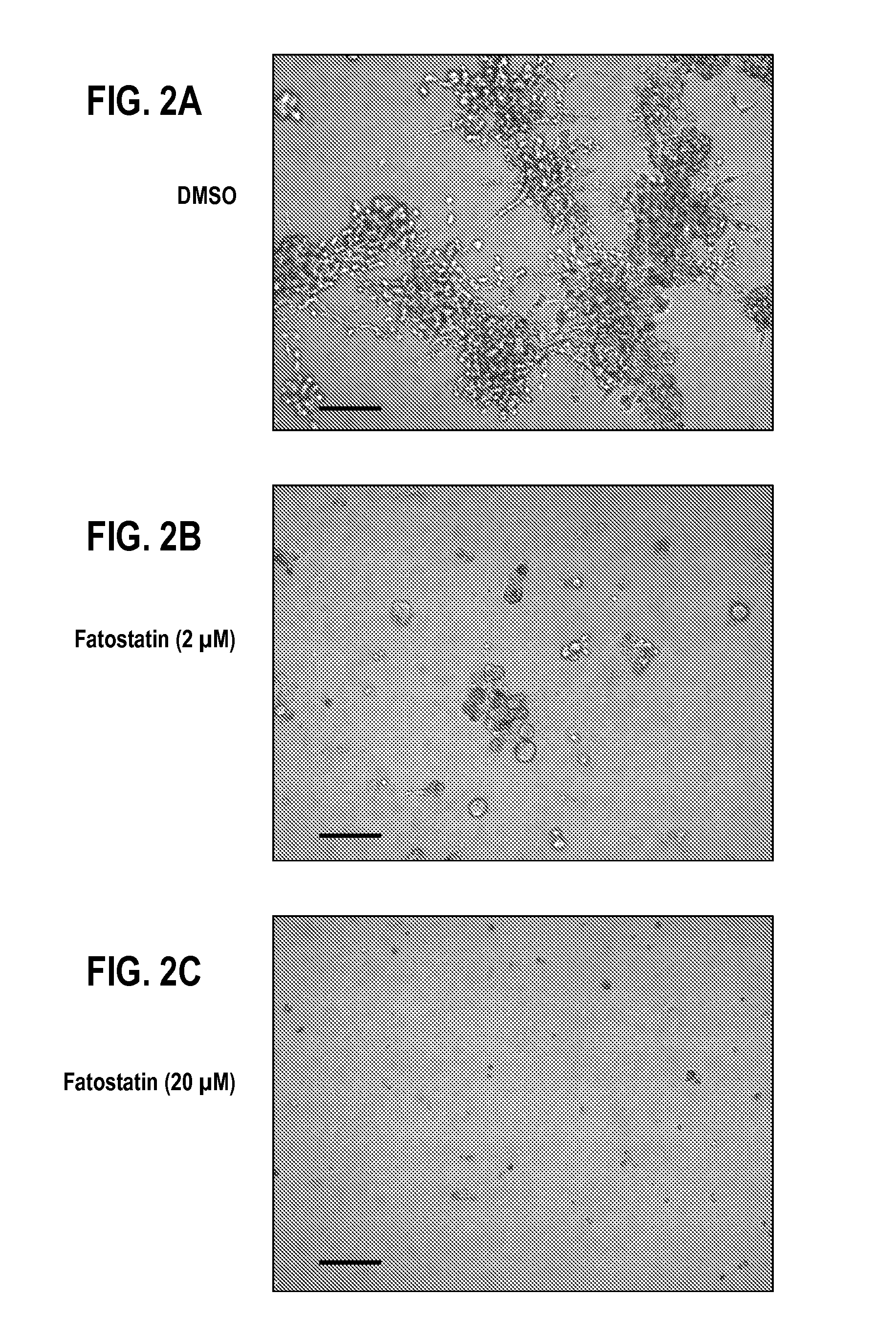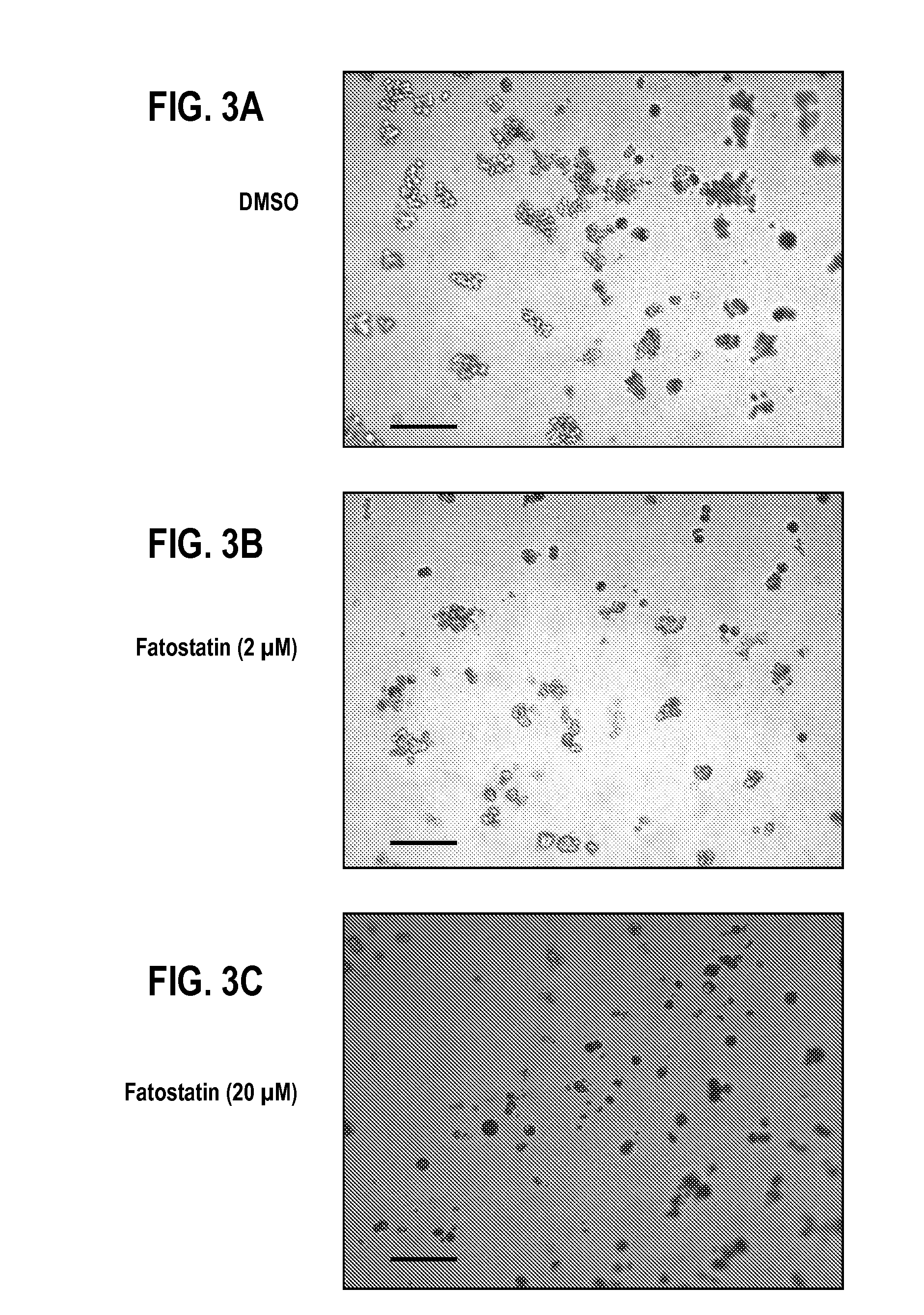USE OF FATOSTATIN FOR TREATING CANCER HAVING A p53 MUTATION
a technology of p53 mutation and fatostatin, which is applied in the direction of biocide, heterocyclic compound active ingredients, instruments, etc., can solve the problems of metastasis, poor prognosis, and associated p53-positive human p53-positive forms
- Summary
- Abstract
- Description
- Claims
- Application Information
AI Technical Summary
Benefits of technology
Problems solved by technology
Method used
Image
Examples
example 1
Materials and Methods
Animals
[0102]Fatostatin was synthesized by the Medicinal Chemistry Core Facility at the Sanford-Burnham Medical Research Institute as previously described (Kamisuki et al., 2009).
Cell Lines and Generation of Stable Cell Lines
[0103]MDA-468 and MDA-231 cells were maintained in DMEM+10% FBS. SKBR3 cells were maintained in McCoy's 5a medium+10% FBS. All cells were maintained at 37° C. in 5% CO2. To generate stable cell lines with inducible shRNA, constructs were introduced into MDA-231 or MDA-468 cells by the retroviral mediated gene transfer method. The generated viruses were harvested and MDA-231 or MDA-468 cells were co-infected with the rtTA and one of the vectors. After selection with puromycin (vector with shRNA) and hygromycin (rtTA), clonal cell lines were generated by the limited dilution method. Clonal cell lines were selected based on the extent of p53 knockdown. Experiments were carried out on clonal cell lines or stable pools (MDA-468.shp53 pool, MDA-46...
example 2
MDA-468.shp53 Cells Treated with Fatostatin
[0106]MDA-468.shp53 cells were treated with Fatostatin (20 μM) and subjected to ChIP analysis. FIG. 1. Cells in 3D culture were treated on Day 1 or Day 4 of the 3D protocol and refed every 4 days with fresh drug. Data are presented as mean+−SD of six independent experiments. **p<0.01.
example 3
MDA-231.shp53 Cells Treated with Fatostatin
[0107]MDA-231.shp53 cells were grown in 3D cultures for 8 days and treated with DMSO and fatostatin (2 or 20 μM). Drugs were added on day 1. Representative DIC images are shown. FIG. 2. Scale bar, 200 p.m.
PUM
| Property | Measurement | Unit |
|---|---|---|
| body weight | aaaaa | aaaaa |
| body weight | aaaaa | aaaaa |
| body weight | aaaaa | aaaaa |
Abstract
Description
Claims
Application Information
 Login to View More
Login to View More - R&D
- Intellectual Property
- Life Sciences
- Materials
- Tech Scout
- Unparalleled Data Quality
- Higher Quality Content
- 60% Fewer Hallucinations
Browse by: Latest US Patents, China's latest patents, Technical Efficacy Thesaurus, Application Domain, Technology Topic, Popular Technical Reports.
© 2025 PatSnap. All rights reserved.Legal|Privacy policy|Modern Slavery Act Transparency Statement|Sitemap|About US| Contact US: help@patsnap.com



